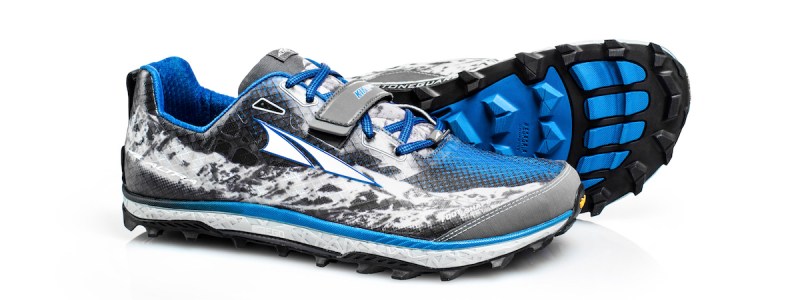
Altra Footwear decided to debut their newest, aggressive trail running shoe the King MT ($140) in the dead of winter. Why? Because it’s that freaking tough.
Named after the intense 13,534-foot King’s Peak (Utah’s highest), the King MT kicks were designed to speed through mud, light snow, wet grass, and uneven mountain terrain. Hence the prominent spikes on the soles (thank you, Vibram).
Available February 1 in three colorways (black/blue, black/red, black/silver) the King MT’s look like a part soccer cleat part ultramarathon shoe, rocking a lower stack height than Altra’s former model. What makes them so suited for the gnarly outdoors is a newly developed Altra Ego midsole, made from a compound that provides a bouncier cushion with more energy return. And yes, it’s softer and thinner than we’ve yet to see— the entire shoe is only 8.5 ounces.
High caliber responsiveness at a lower weight, plus long-term, mountain-over-mountain durability is why we’re grinning ear-to-ear.

Underneath that midsole are significant 6.0 mm outsole lugs—the deepest on any Altra shoe—designed for lateral breaking, medial gripping, and maximum traction in wet and slippery conditions. An extra dose of underfoot protection comes from the flexible StonedGuard rock plate. And lastly, the upper is highly supportive, with TPU overlays on a durable polyester ripstop fabric. A FootLock midfoot strap design locks the foot in place on steep descents. Oh, and there will be steep, steep descents.

If you get bored with the trail, take these puppies to the Spartan Race tracks, as the design is killer when it comes to providing traction through the obstacle course. Altra also expects the King MT to find a sweet spot with Fell runners— a popular European sport that should truthfully be called hill hell, since it consists of racing off road over upland country where the climbs are thigh numbing. Fell run contenders can’t be worrying about poor footwear, since they’re more concerned with intense mountain navigation (a skill you must have to compete), and the accessibility of their survival equipment.
So yeah, these are shoes for outdoor, he-man pursuits. We wouldn’t wear them to the gym.
Photos courtesy Altra Footwear


